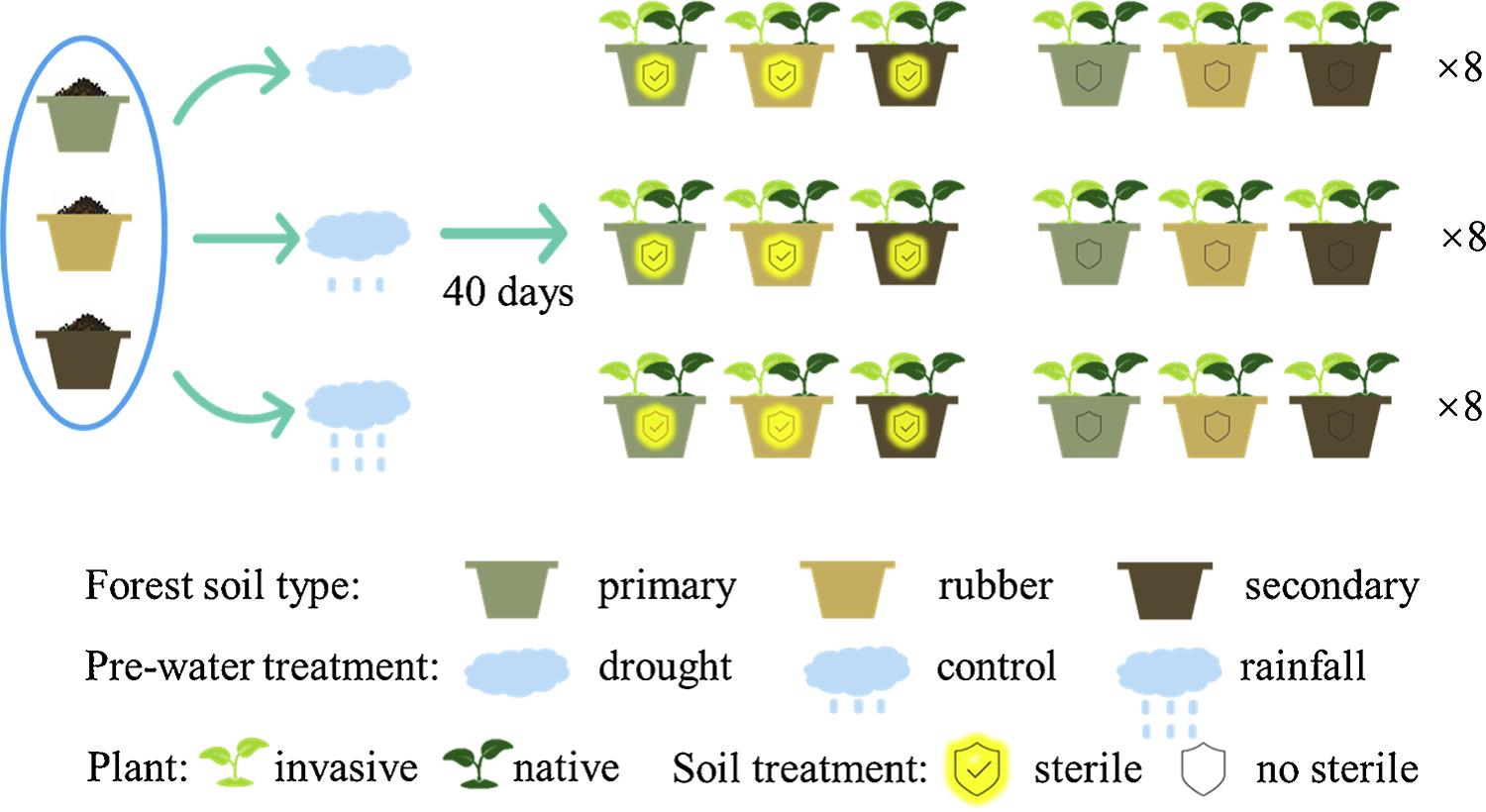Global change characterized by land use change and extreme precipitation has emerged as a challenge for tropical forests in Southeast Asia. Numerous studies have indicated that these changes could affect soil ecology. However, it remains unclear whether land use change and extreme precipitation influence plant invasiveness in tropical forests.
In a study published in Environmental and Experimental Botany, researchers from Xishuangbanna Tropical Botanical Garden (XTBG) conducted a full factorial experiment to test the soil legacy effect of extreme precipitation and land use change on the absolute and relative biomass production of invasive plants in tropical forests.
The researchers mixed Chromolaena odorata, one of the most invasive plants in southern China, separately with two common co-occurring native species in the soil, exposed to three water supply levels (drought, normal, rainfall) and two soil microorganism treatments (ambient and sterile) collected from three forests (primary, rubber and secondary forests) in Xishuangbanna.
They found that drought increased the availability of phosphorus in the soil of tropical forest. Chromolaena odorata had a greater total biomass but a lower biomass fraction in secondary forest soil than in primary forest and rubber plantation soil.
The soil legacy effect of drought was positive on both the biomass and biomass fraction of C. odorata. A higher soil organic carbon content and available phosphorous were found in the secondary forest, and both the biomass and biomass proportion were increased by sterilization in this kind of soil.
They further found that increased precipitation increased invasive potential in rubber plantations. The biomass and biomass fraction of C. odorata under rainfall was greater than that under the control treatment.
Moreover, the microbial legacy effects had a negative impact on alien invasiveness. The invader was suppressed by microorganisms more than native species were. Thus, microorganisms in secondary forest soil might be a key factor mediating the coexistence of invaders and native species.
“Our study demonstrated the pronounced soil legacy effect of land use change, extreme precipitation and their interactions on the invasion success of C. odorata,” said ZHENG Yulong, principal investigator of the study.
Contact
ZHENG Yulong Ph.D Principal Investigator
Key Laboratory of Tropical Forest Ecology, Xishuangbanna Tropical Botanical Garden, Chinese Academy of Sciences, Mengla, Yunnan 666303, China
E-mail: zhengyl@xtbg.org.cn

The common garden experiment in Xishuangbanna. (Image by SHI Xiong)

